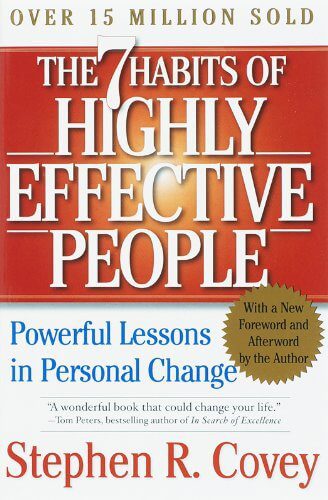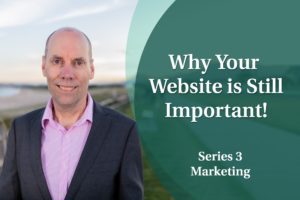
by Phil Latz
Hi, welcome to this latest blog in my finance series that I hope will help you become more successful in your business.
As a business owner myself for many years, I understand the challenges that you face.
The theme of this series is how to maximise your profit.
Today I’ll be sharing with you about why you should begin with the end in mind.
This is one of the seven habits in author Stephen Covey’s best selling book, The Seven Habits of Highly Effective people.
I won’t be reviewing what Stephen Covey has to say about this habit, but would certainly recommend that you read the book.
Instead I’m going to focus on specific business implications of beginning with the end in mind.
From a business owners’ perspective, the end, usually means either selling the business, handing it over to the next generation, or closing it down.
Over my decades in business media, I’ve seen so many examples of owners who do not end their businesses well.
For example one lady had a retail business that had been trading for about two decades, all within the same suburb and for years at its final premises.
As often happens, the owner had ‘had a gut full’ as she emotionally described it, with certain customers, staffing issues and so on.
Even though the business was not particularly large or financially strong, it still had assets such as stock, locational equity, exclusive territorial agencies for certain product brands and so on.
But rather than make any serious or sustained attempts to sell the business, she decided to simply shut the doors.
From an emotional perspective, this is understandable. She was tired and stressed. She just wanted to get out. But this can put a jaded view on the potential of the business. Remember that prospective buyers are keen, excited, full of energy and can see potential that the outgoing owner probably does not.
For many small business owners, particularly sole traders or partners who have not paid themselves a proper salary and superannuation, selling the business is their one chance to earn a lump sum, equivalent to a superannuation payout, from their business.
Without wanting to sound boastful, I’d like to give you two personal examples of when I’ve followed this principle and begun with the end in mind. The first of these we’ve already benefitted from. The second is a work in progress.
For 25 years my wife and I owned and ran a business that traded as Bicycling Australia. Over those years we created a wide range of products and events, some of which came and went, but when it came time to sell we essentially had three separate assets to sell, which in order from largest to smallest were, a magazine and web publishing business, a book publishing business and a mail order business. Ultimately, we sold these to three separate purchasers over the span of a couple of years.
Fortunately we’d begun with the end in mind. The assets were first created and always held within company structures. We’d spent a lot of money over the years securing all of our IP, that’s the intellectual property, such as trademarks.
Everything was well documented and we recruited expert assistance to guide us through the sale process.
Upon selling the business we were pleased to be able to take advantage of the very generous tax concessions that exist for small business owners who sell a business that they’ve run for a long time. The government also knows that this is small business owners’ best and possibly only chance to create a superannuation fund.
We’d purchased our business premises during our 25 year journey and we were happy to discover that it had more than doubled in value. We could take advantage of capital gains tax concessions for small business owners who sell their premises after primarily using it to run their own business for longer than a certain number of years.
A regular wage earner could reasonably argue that these tax concessions are unfair, because they’re not available to them.
But most business owners probably take a different point of view. They work much longer hours than their employees, often with most or all of their capital at risk, tied up in their business.
My second example relates to this business training series that as well as delivering in the blog format that you’re reading now, I’m also producing as a video series on a YouTube channel that we’ve created for this purpose. Before starting this series, I studied the basics of YouTube channels – what usually works and what doesn’t.
I learned that many people burn out after a few months. They get discouraged when they get so few views to start with, because rarely does success come within the first two years.
I also learned the importance of posting at regular intervals, the advantages of creating series, and of planning future topics well in advance.
With this in mind I created a plan of 14 series, totalling about 100 individual episodes.
If I hadn’t begun with the end in mind and mapped out my plan in advance, I might have joined the ranks of discouraged people who burn out before their channel builds a substantial audience.
But even thought we haven’t yet reached come close to our audience goals, thanks to beginning with the end in mind, I’m still in there swinging, learning and hopefully improving as I go.
To sum up, make sure your business is at least ‘near sale ready’ at every moment of your journey.
You never know when health or family issues might arise that suddenly make it important to sell your business.
Selling your business should give you a unique chance to make a large lump sum with generous tax concessions.
Make sure you can cash in on what you’ve worked so hard to create and build!
I believe that with passion, consistent effort and wise advice you can succeed in your business.
I wish you all the best and I’ll see you next time.


